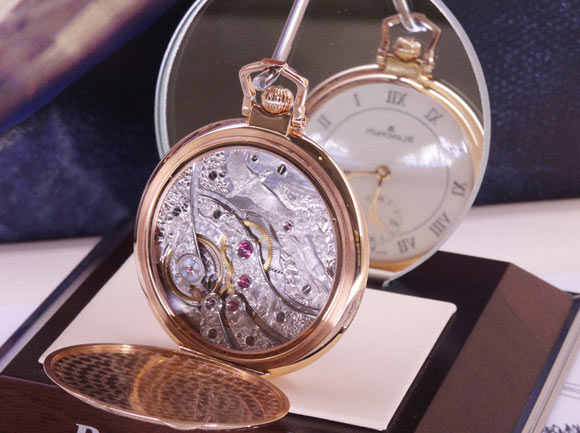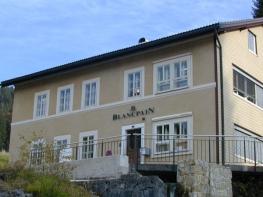Anyone coming down from the Marchairuz pass could easily drive by without noticing it, while approaching it from Le Brassus means crossing a branch of the River Orbe to reach this discreet location backing onto a hillside. By “it”, we mean the farmhouse, a listed historical two-storey building of which the modest size is inversely proportional to the significance of its role: this is where Blancpain creates its finest Haute Horlogerie models.
There is simply no equivalent in the vicinity. Back when the brand was still co-owned by the Biver/ Piguet (1982), it settled there and focused most of its activities in this spot. The Swatch Group’s takeover 10 years later gave Blancpain a new boost and the ensuing fast growth that was both internal and external (with the integration of the Frédéric Piguet factory) led it to spread to various new locations. The group then made a singular decision: to endow the brand with a production site (known as T0) in Le Sentier, with a 700-strong workforce, while preserving the historical farmhouse and continuing to entrust it with the assembly and decoration of Haute Horlogerie models.
20th wedding anniversary
Two decades on, the state of this particular union is as flourishing as ever. The Swatch Group even treated its prestigious farmhouse to a makeover in 2007-2008 with a complete interior renovation. The aesthetic approach adopted involves full respect for the watchmaking traditions of the Vallée de Joux, with moderately sized workshops, wooden workbenches, absolute serenity and plenty of exposure to daylight.
Of its 40 occupants, around 30 are devoted to horology as such, while the rest exercise various handcrafts, mainly engraving and painting on enamel.

Letting time take its course
This is a place free of any productivity calculations, deadlines to be met or assembly chains to be kept up to pace. The objective is absolute quality, without worrying about the time required to meet that goal. In a profession such as engraving, human dexterity will determine how long it takes to finish each part. In the Minute Repeater workshop, everyone knows that perfection calls the tune: of the two calibres of this type made by Blancpain, five or six weeks will elapse before they are ready to be cased up.
When it comes to enamelling, the time factor simply does not come into it. “For dials with known colours, I know the blends, the firing times and things move quite fast”, says the single artisan responsible for this art. He goes on to say, “When someone orders an unknown colour or a very special kind of painting, I have to make several attempts in order to achieve the result I’m looking for”, before concluding with the telling words: “But that doesn’t matter to me at all. Here, I am granted as much time as I need to do my work properly. I will get the job done regardless of how long it takes.”

Well-charted territory
The farmhouse in Le Brassus avoids dissipating its efforts on countless different models. The minute repeater 33 and 233 movements have been in use for a long time now. The tourbillon is also fully mastered by Blancpain, as is the carrousel that has even become one of its signatures.
Above and beyond this well-marked roadmap lies… the unknown. These are bespoke models that also have their place in the company farmhouse. The numbers are small and the details are kept secret. A few lucky future owners generally tend to request unique and personalised finishes. No photos or statistics are available, since this activity is strictly confidential. For the team of artisans exercising their art in the farmhouse, this field of activity is a double-edged challenge: a daily source of creative stimulus, as well as a considerable added sum of work alongside the creation of exceptional models and various limited series.
The latter are mostly defined a year or two ahead of time. Technical feasibility studies and component production are done in Le Sentier, while the farmhouse is responsible for actually bringing them to life. Some collections are nonetheless predictable from one year to the next: by way of example, after the year of the horse, the next Chinese new year will be that of the goat. The ‘watchmaker-farmers’ in Le Brassus should feel entirely at home.

Click on the large image on top of the page to view the sideshow.






